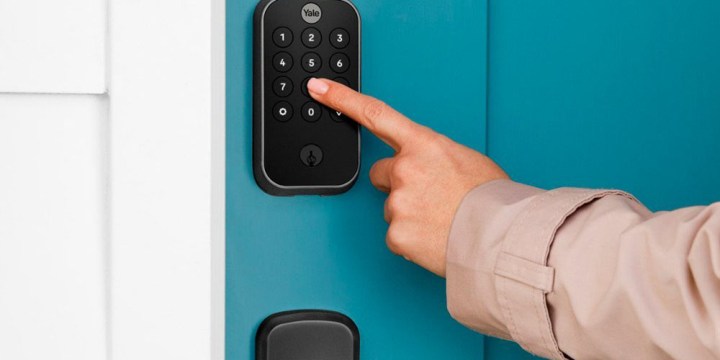Yale uses something known as a Keychain to organize all your smart locks. This makes it easy to see all your devices in a single place – but if you decide to remove a lock from your property, you'll also need to remove it from your Keychain. The same goes for visiting an Airbnb with a smart lock, as hosts will often push the lock's info to your Keychain for easy access during your stay.
But how do you remove a location from your Yale keychain?
Thankfully, the process is painless, though there are a few wrinkles you'll need to navigate. Here's a look at how to remove a home from your Yale account Keychain.

How to remove a house from your Yale Keychain
There are a few ways to remove a house (or lock) from your Yale Keychain. The simplest way is if you're a guest at an Airbnb. In these instances, the property is typically removed automatically once your stay is over. If this doesn't happen, you may have to contact the Airbnb host to remove you from its guest list. Alternatively, guests on a lock can try the following steps (though note this process may not work for all situations):
Step 1: Open the Yale Access app.
Step 2: Find the lock you want to remove from your Keychain.
Step 3: Navigate to the Guest List tab at the bottom of the screen.
Step 4: Press Remove Self.
Step 5: You'll be greeted by a few pop-ups asking if you want to confirm the process. If you do confirm the process, you'll be removed from the lock and it'll no longer appear in your Keychain.
How to remove a house from your Yale Keychain as the lock's owner
If you're not a guest and are instead the lock's owner, you can follow a different set of steps to remove the lock. However, this requires a full factory reset.
Step 1: Open the Yale Access app.
Step 2: Find the product you want to reset and click on it.
Step 3: Open the Settings menu (located at the bottom-right corner of the screen).
Step 4: Select Lock Settings.
Step 5: Select Factory Reset.
Step 6: This will then walk you through the entire operation.
Keep in mind that performing a factory reset will return all the lock's settings to their default state. This is great if you're looking to sell the lock or remove it from your home, but it's not ideal if you plan on relocating it to another door. In those instances, it might be better to simply rename the lock instead of performing a factory reset.
Renaming can also be done in the Yale app, as you'll just need to navigate to the Settings menu, find your device, then select Lock Name. From here, you can quickly change its name. Consider using this option if you're moving it from the front door to the garage or back door, as it's much easier than running a full factory reset.
Also, note that factory resets might give you an error if you're not connected to Bluetooth. If this happens, you'll want to try moving your mobile device closer to your smart lock and enabling Bluetooth on your phone. Some products might give you a "Reset Anyway" option, which allows you to perform the reset even if you're not nearby – such as after selling the lock or moving to a new property.
Editors' Recommendations
- Best smart lock deals: Save on Yale, Wyze, August, and more
- Should you buy a new smart lock or retrofit your existing deadbolt?
- The best smart light switch for Alexa, Google Home, and HomeKit
- Anker SOLIX X1 offers effective solar power storage for your home backup
- Yale Assure Lock 2 Touch picks up new features with the Z-Wave Smart Module



